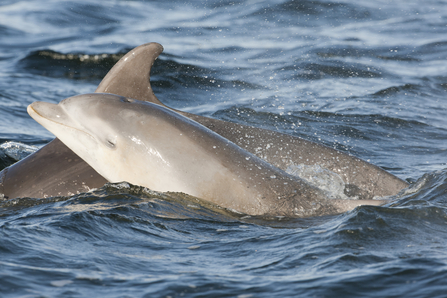
John MacPherson/2020VISION

John MacPherson/2020VISION
The southwest of England is known as a hotspot for cetaceans but until recently little was known about the bottlenose dolphins glimpsed off the coast. Now new research reveals that the southwest of England is home to a resident population of bottlenose dolphins, the first and only such community to be identified in English waters.
Ruth Williams, Marine Conservation Manager at Cornwall Wildlife Trust, said: “This research is proof that we have a resident population and is incredibly exciting. Further work is needed but this is a huge step forward and I am proud of what our partnership between Cornwall Wildlife Trust, scientists and boat operators has achieved. The future of these iconic animals is in our hands and we need to make sure the few we currently have in the southwest are given the protection not just to survive, but to thrive.”
Rebecca Dudley, MRes at University of Plymouth, who has been analysing sightings and photographs of dolphins in the region, has gathered data from a large number of collaborators between 2007 and 2016, studying their social structure and distribution. Individual dolphins can be recognised by their dorsal fin, with its distinctive shape and markings. From thousands of records, Rebecca Dudley identified 98 individuals and was able to define a distinct social group of 28 resident dolphins, present throughout the year in shallow coastal waters around the southwest.
This discovery could have significant implications for the conservation of these animals, which currently receive no specific protection in their home range. As dolphins are so wide-ranging, strong evidence is needed to show that an area is important before protection can even be considered. The UK’s two other resident bottlenose dolphin populations (in the Moray Firth, Scotland, and in Cardigan Bay, Wales) have both received protection.
Bottlenose dolphins in the southwest face several threats, including pollution from plastics and chemicals, injury by fishing nets, and disturbance from recreational activities. Highlighting the existence of a resident population is the first step in seeking specific protection for these animals, with the next step being to collect more evidence on their movements and behaviour and strengthen the case for the importance of this area.
This research was made possible by the work of the Southwest Bottlenose Dolphin Consortium, a partnership between scientists, research groups and eco-tourism operators, co-ordinated by Cornwall Wildlife Trust. This project builds on work carried out by individuals over recent years and demonstrates the importance of collaboration when it comes to protecting our amazing wildlife, with stakeholders and interested parties working together to produce more effective results.